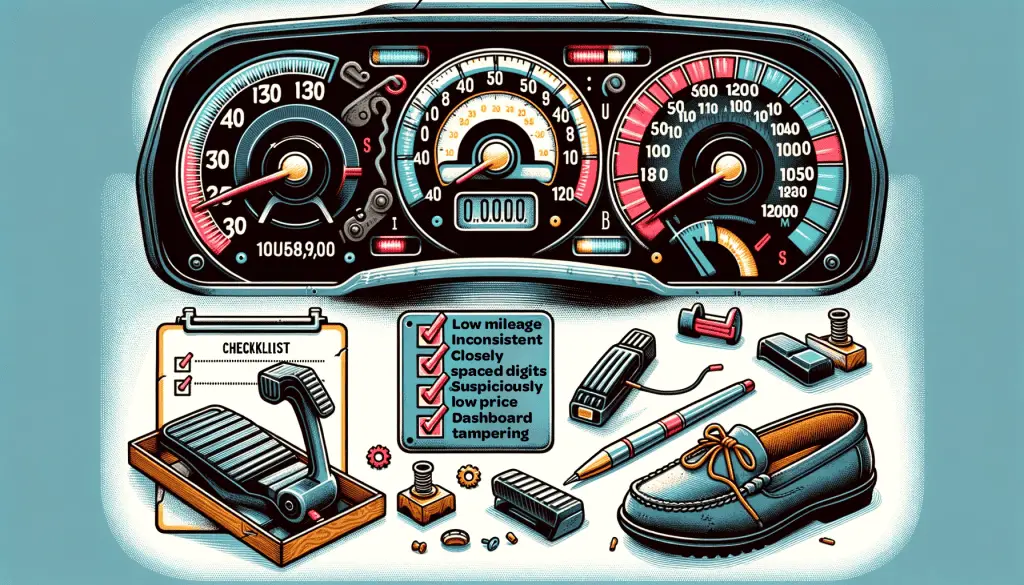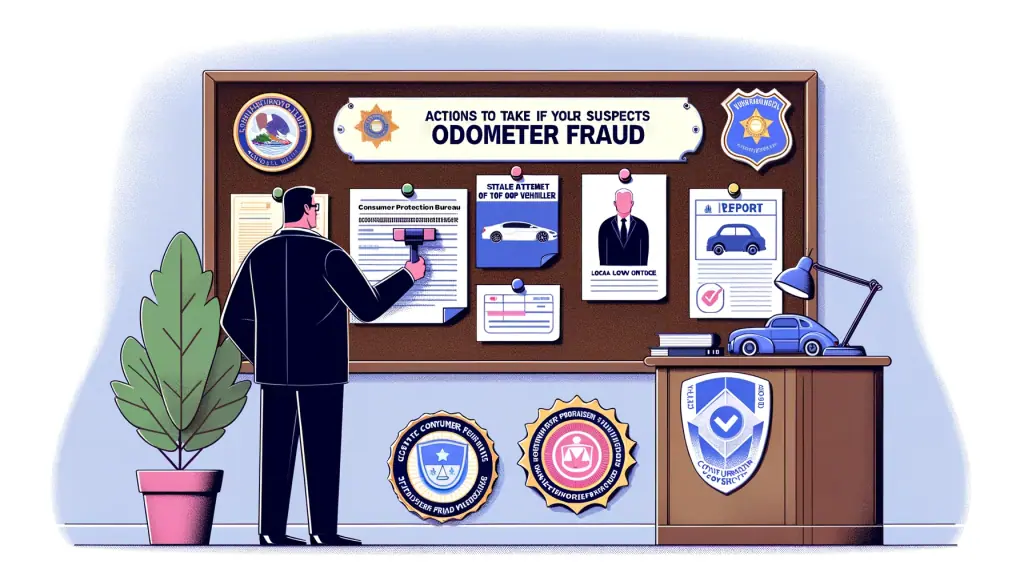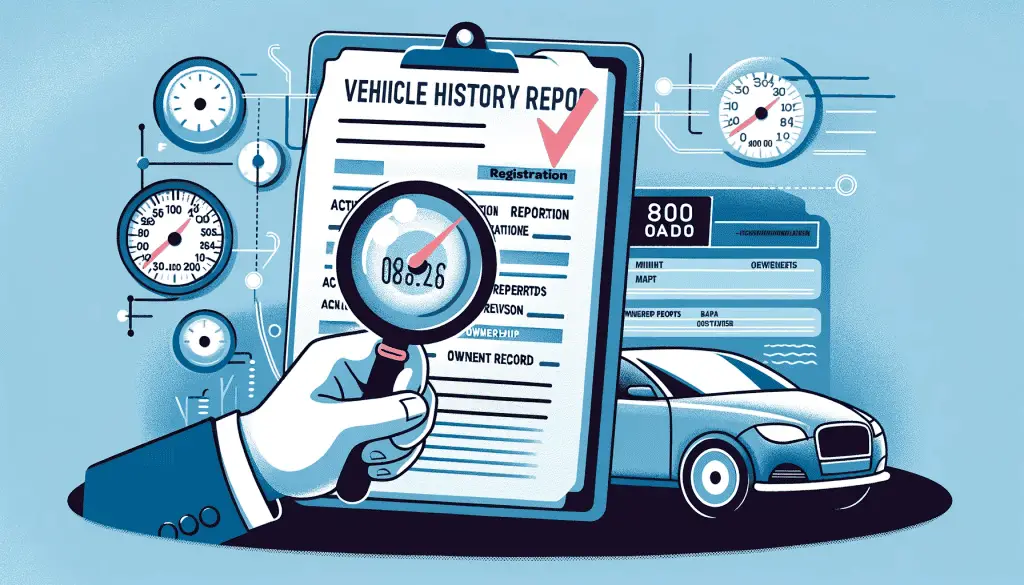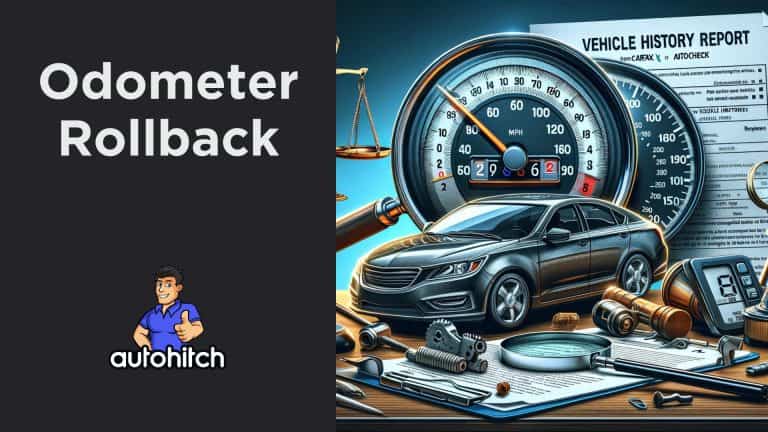Odometer rollback fraud, unfortunately, remains prevalent in the used car market today.
Over 450,000 vehicles per year are sold in the United States with illegally modified odometer readings to show lower mileage, costing buyers over $1 billion annually, according to National Highway Traffic Safety Administration (NHTSA) estimates.
As a former used car dealer, my hope with this article is to help educate both consumers and dealers on how to detect odometer tampering and protect yourself when buying or selling used vehicles.
Table of Contents
What Is Odometer Rollback and Why Does It Happen?
Odometer rollback involves altering a vehicle’s mileage readout to make it appear lower than the actual miles driven. This can occur in a few ways:
- Manually rolling back the numbers on older mechanical odometers
- Using tools to change digital odometer readings electronically
- Replacing the odometer with one showing fabricated lower miles
Unscrupulous sellers do this to inflate the car’s value since vehicles with lower miles typically sell for higher prices.
The average consumer loses $4,000 when unknowingly buying a car with a rolled-back odometer according to CARFAX data[3]. This does not include extra repair costs that often arise.
Relevant Helpful Article to Read: What Does Exempt Mean on a Car Title
Signs to Check for Potential Odometer Tampering

While digital tools have made odometer fraud easier to perpetrate, there are still ways to detect it through careful inspection. Warning signs include:
- Low mileage inconsistent with wear & tear on pedals, steering wheel, tires, etc.
- Misaligned or closely spaced digits on mechanical odometers
- Evidence of dashboard tampering like loose screws or scratches
- Check documents for mileage inconsistencies
- Suspiciously low price compared to value for stated mileage
Tricks like keeping service records to match the false lower miles may work temporarily, but telltale signs of high wear eventually show up.
Protect Yourself From Becoming a Victim
As both a dealer or a car buyer, you can take steps to avoid odometer fraud:
- Review the vehicle history report from CARFAX or AutoCheck for odometer discrepancies
- Closely inspect the odometer area yourself for any sign of tampering
- Have a mechanic thoroughly inspect it before making a purchase
- Take a test drive to check if mileage increases properly
- Walk away from any seller unwilling to provide detailed records or a history report
Take my word for it:
The small upfront costs are well worth avoiding the headaches and financial loss from unknowingly buying a vehicle with fraudulent mileage.
What To Do If You Suspect Odometer Fraud

If you uncover strong evidence of odometer tampering, report it immediately to help prevent future buyers from also becoming victims.
Exact agencies to contact differ by state but may include:
- Your State attorney general
- Department of Motor Vehicles
- State or local law enforcement
- State Consumer Protection Bureau
Providing the seller’s details and evidence of manipulated mileage can prompt an investigation.
You may also consider consulting a consumer fraud attorney to understand any legal recourse in your specific situation.
Penalties for Odometer Rollback Fraud
Committing odometer fraud violates both federal and state laws. If convicted, penalties per vehicle can include:
- Fines up to $10,000 in civil penalties
- Up to $250,000 in criminal fines
- Up to 3 years in prison for criminal charges
All fines can total up to one million dollars!
So clearly, perpetrators have significant motivation from the inflated sales profits but face steep consequences if caught.
The Key Role of Vehicle History Reports

One of the most valuable tools both dealers and individual buyers have in combatting odometer fraud are detailed vehicle history reports from providers like CARFAX and AutoCheck.
These vehicle history reports compile registration details, mileage data, accident reports, ownership records, lien statuses and more from an array of sources.
Cross-referencing current odometer readings with past records makes tampering plainly evident in many cases.
So be sure to invest the small fee for your used car’s vehicle history report. They provide vital information to confirm not just potential odometer fraud but larger condition questions as well.
My Final Thoughts and Advice
In closing, odometer rollback fraud remains a Growing problem as digital tools make it even easier for fraudsters to alter readings.
But consumers and dealers can protect themselves through careful inspection, thorough history reports, mechanic reviews and simply avoiding sellers who cant or won’t provide documentation.
I hope this guide gives both individual used car buyers and dealers like myself better awareness and resources around this problematic issue. Please help curb this illegal practice by learning what to watch for and reporting any suspected cases.
Let me know if you have any other questions about odometer fraud!
Sources and References:
- https://sierralitigation.com/2021/02/08/the-legal-skinny-about-odometer-fraud/
- https://superkilometerfilter.com/knowing-what-is-the-penalty-for-odometer-tampering-is-a-red-flag-for-wrongdoers/
- https://www.cnbc.com/2023/02/28/odometer-fraud-in-america.html
- https://www.prnewswire.com/news-releases/carfax-data-odometer-fraud-up-across-the-us-302007058.html
- https://www.shouselaw.com/ca/blog/criminal-defense/odometer-tampering-is-a-federal-crime/



